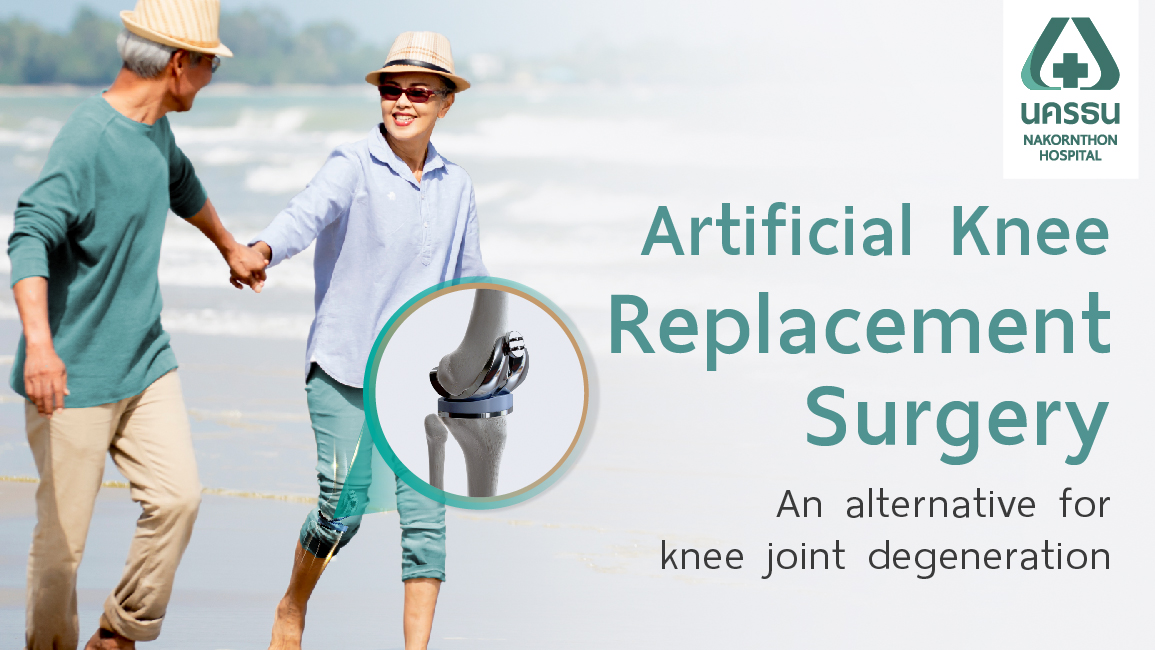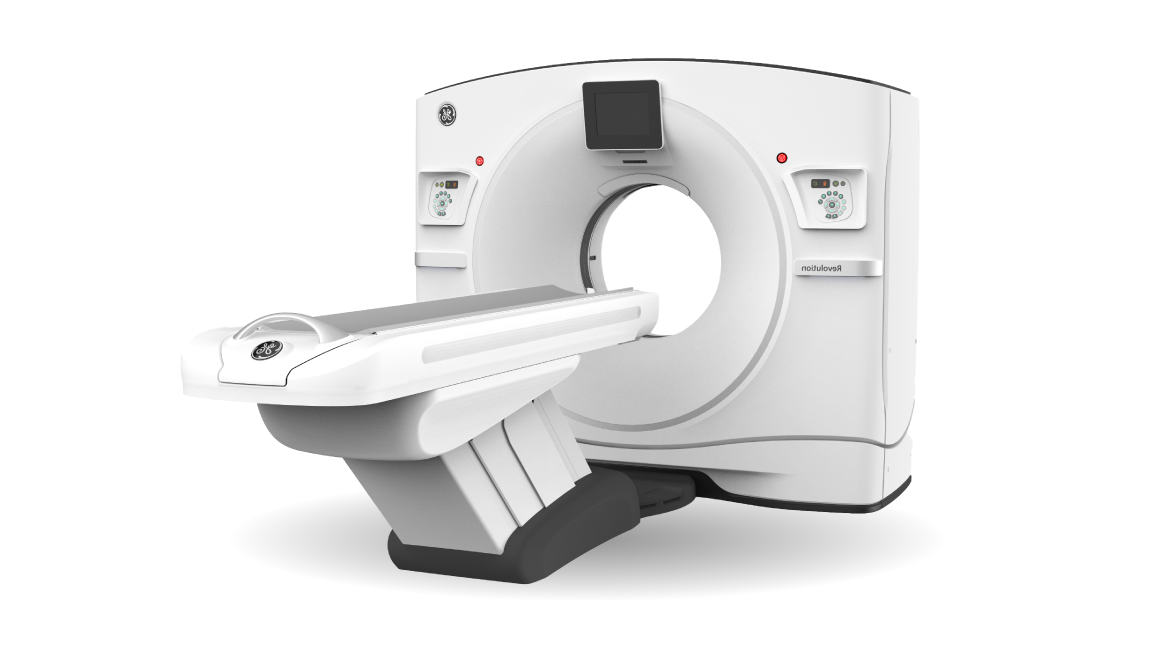Upgrading knee replacement surgery with analgesic techniques
Center : Orthopedics Center
Article by : Dr. Nithiwut Pinsiranon

The knee joint is an important part of the body used for movement, whether standing, walking or sitting. When the knee joint is deteriorated it may cause pain when moving and can affect daily life.Total Knee Arthroplasty (TKA) is another treatment option for people with severe knee osteoarthritis. It is made by removing the deteriorated knee surface and replacing it with an artificial knee joint. This is an effective surgical procedure. However, the patient will not have pain after surgery like in the past. Because the patient will receive care and pain is relieve after surgery. By injecting anesthesia around the peripheral nerves (Peripheral Nerve Block), which is a highly effective and safe analgesic method, it can reduce the body's response to the stress of surgery. Make patients move back and have a good quality of life again.

Table of Contents
- Osteoarthritis Warning Signs
- Factors that cause osteoarthritis of the knee
- Knee replacement surgery technology treat osteoarthritis
- The indications for surgery are as follows:
- Preparation before knee replacement surgery
- Surgical procedure
- Elevate the surgery with pain relief aids for faster recovery after surgery
- After surgery
- Free Online Consultation with a Specialist
Osteoarthritis Warning Signs
Osteoarthritis caused by degeneration of articular cartilage both in terms of shape, structure, function of bones, joints and nearby joints. The changes that occur cannot be returned to their original state and may have more severe deterioration accordingly in relation to the following factors:
Factors that cause osteoarthritis of the knee
- Age - The older you get, the more likely it is due to the longevity.
- Gender - Females are 2 times more likely to suffer from osteoarthritis than males.
- Weight - The heavier you are, the faster the knee joint deteriorates.
- The use of the knee - people who squat. Sit cross-legged or sitting for a long time Will find osteoarthritis early
- Knee joint use - people who squat sitting cross-legged or sit folded for a long time will find knee osteoarthritis soon.
- Knee injuries - People who have had knee injuries, either fractured knee joints or torn ligaments can cause osteoarthritis of the knee due to reduced muscle and bone strength.
Knee replacement surgery technology treat osteoarthritis
Nowadays, osteoarthritis treatment with knee replacement surgery is very popular because the results of the treatment are fast and make the patient return to normal life without suffering knee pain again. The replacement knee joint surface is made of stainless steel mixed with nickel, cobalt, titanium, and the prosthesis is made of a special plastic material. (Polyethylene) is non-reactive to the body, lightweight and durable to use. It is known by orthopedic physicians around the world.
The indications for surgery are as follows:
- Have osteoarthritis of the knee with wear and tear that is clearly visible on radiographs
- Pain, swelling, and stiffness in the knee joints which affect activities in the daily life of the patient
- Other treatments have been ineffective.

Preparation before knee replacement surgery
1. Physical preparation
- Eat nutritious food from all food groups but when you are full, drink 6-8 glasses of water a day and control your body weight properly.
- Exercise every muscle to be strong especially the thigh muscles. Exercise suitable to your physical condition, such as walking, brisk walking, swimming
- Cycling, including lung training by taking frequent, long, deep breaths.
- Beware of infection in various parts of the body that may go to the prosthesis. If there is a problem, you should see a doctor before surgery, such as a wound on the body. Burning pain when urinating, which may be caused by urinary tract inflammation. Including oral health, teeth, fillings and scaling should be done before surgery.
- Stop smoking at least 6 weeks before the surgery.
- Abstain from drugs that affect blood clotting, such as aspirin, 7 days before surgery or according to the treatment plan. To prevent heavy bleeding during and after surgery
2. Psychological
- You should make your mind calm and relaxed.
- If there are concerns, have any doubts about the disease, treatment, self-care, expenses, etc., you should ask your doctor or nurse.
3. Preparing caregivers after surgery and prepare to adjust the environment accordingly
- Caregivers should be prepared to assist in the postoperative period for at least 2 weeks or as appropriate.
- Optimize the environment, such as sleeping on a knee-high bed. The bedroom should be on the ground floor. Keep the house clean, tidy, and free from clutter to prevent tripping. The toilet should be kept dry to avoid slipping.
Surgical procedure
It is a surgery to replace only the surface of the 3 bones that make up the knee joint. (The bones of the thigh, shin, and patella), where the doctor will cut the worn or inflamed part of the joint surface. Which has a thickness of about 8-10 millimeters and then put the prosthesis on the femur, the shin bone, both of which are made of fine metal with a special plastic that acts like cartilage sandwiched between the metal prosthesis. The prosthesis inserted behind the kneecap is also made of plastic and use a special cement is applied in between to hold the prosthesis and the bone. Therefore, the prosthesis is strong and durable for a long time.
The outcome of joint replacement surgery is that more than 90% of joint replacement surgery patients experience reduced pain and able to return to daily life close to normal.
Elevate the surgery with pain relief aids for faster recovery after surgery
One concern among patients undergoing knee replacement surgery is the pain after the surgery. But with advances in medical science. It helps patients not suffer pain after surgery unlike in the past. The patient will receive care and relieve pain after surgery by injecting anesthesia around the peripheral nerves (Peripheral Nerve Block), which is a highly effective and safe analgesic method that is currently and widely used. Because it is part of multimodal analgesia that has a mechanism of action working differently together. Therefore, it can relieve pain well and help reduce complications from the use of non-steroidal drugs (NSAIDs) and opioids.
Pain relief injection procedure Anesthesia is injected with a needle or catheter to the peripheral nerves. An anesthetic will inhibit the conduction of nerve signals from entering the spinal cord. This is done under ultrasound, where the doctor examines the nerves before giving the medication. Thus, patients receive effective pain relief after surgery safely. It can reduce the body's response to the stress of surgery as well. Helps to recover faster after surgery and reduce the length of hospital stay.
Due to the current care guidelines for patients undergoing surgery. In addition to considering the safety of patients, it also focuses on promoting recovery after surgery, for the patient to return to normal as soon as possible. Peripheral Nerve Blocks are therefore an effective way to control pain during and after surgery. Reducing the body's response to the stress of surgery and helps to recover faster after surgery and reduce the length of hospital stay.
After surgery
After osteoarthritis surgery the patient has to stay in the hospital for 4-5 days, about 1-2 days after the surgery patient will begin to learn to walk with a walker under the supervision of a doctor and physical therapist. Including arranging the house to be suitable and safe and see a doctor on a regular basis to monitor for symptoms and possible side effects after surgery, such as post-surgical infections Loose knee joints after a period of use, etc.
Knee replacement surgery, Knee osteoarthritis treatment is a treatment for severe osteoarthritis. This can be done by removing deteriorated knee skin and replacing it with artificial knee cartilage. It is a surgery to improve the quality of life make patients recover from pain and suffering and able to walk normally or as close to normal as possible. And thanks to advances in innovation, surgery is no longer scary as it has a help in managing postoperative pain by injecting anesthesia around the peripheral nerves which is a safe and effective method to help relieve pain prevent various complications make the patient recover faster reduce hospital stays and able to return to normal daily life as usual.
For more information, please contact:
- - Website : https://en.nakornthon.com
- - Facebook : Nakornthon Hospital - International Patient
- - Line : @nakornthoninter
- - Tel: 02-450-9999 (Available 24 hours)
Free Online Consultation
Article of Orthopedics Center
High-Speed CT scan 443 Slices: Precision, Speed, and Reduced Radiation Exposure






